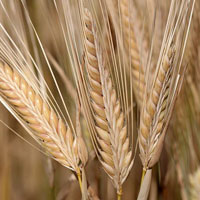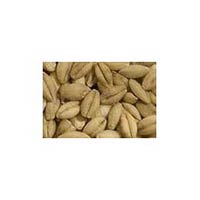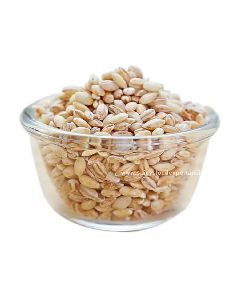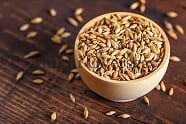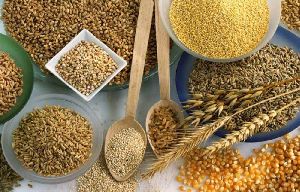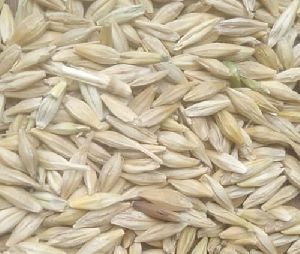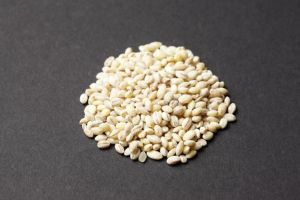Listing ID #4690593
Company Information
Ask for more detail from the seller
Contact SupplierIntroduction
Barley is an important rabi crop. For human consumption, it is largely consumed by the poor classes either as flour for chapati making, pure or mixed with wheat or gram flour, or as parched grains to make sattu.
In Bihar and West Bengal the poor as a staple food consume dehusked barley. In Uttar Pradesh and Rajasthan, mixed flour of barley, gram and wheat is used for making `missi roti’. However, almost 60 per cent of the total barley produced in India are consumed as cattle feed. Barley is also used in the manufacture of malt and , aryuvedic medicine, cocoa-malt drinks and baby foods. With the coming up of many new breweries, after the liberalised licensing policy, the share of barley in the production of malt for manufacture of is expected to rise.
Area Of CultivationThe are under barley cultivation in India has been gradually going down as farmers are shifting to more remunerative crops like wheat and gram or cash crops like rapeseed, mustard or safflower. Barley is grown mainly in the northern plains of the country, but its cultivation extends up to elevations of about 4,575 metres (15,000 feet) in the Himalayas. Its greatest concentration is in the states of Uttar Pradesh, Rajasthan and Bihar, which account for approximately 52, 18 and 11 per cent, respectively, of the total area. It is also grown to a considerable extent in northern Madhya Pradesh, Haryana, Punjab, West Bengal, Himachal Pradesh and Jammu and Kashmir.
It is of minor importance in the south of 20oN, although it can be grown successfully wherever wheat can be grown. In this region, it occupies small areas in Gujarat, Maharashtra, northern Karnataka and in the Nilgiris and the Palney Hills of Tamil Nadu. About 51 per cent of the total area under this crop receive irrigation, the remainder being grown as a rainfed crop. The crop needs less water and is more tolerant of salinity and alkali conditions than other winter cereals. It is, therefore, of great significance in areas where it is not possible to take a successful crop of wheat owing to unsuitable soil and insufficient irrigation.
SeasonBarley requires cool weather during early growth and warm and dry weather at maturity. It grows reasonably well in temperate as in sub-tropical regions of the world. Being drought resistant, barley suits areas with scanty rainfall. Sowing of barley in India takes place during October to December.
SoilsBarley can be grown successfully on those soils, which are suitable for wheat cultivation. However, it thrives well on well-drained fertile deep loam soils. Severe lodging occurs when grown on extremely fertile soils. It is grown widely on a variety of soils ranging in their texture from sandy to heavy loams in the Indo-Gangetic plains and on terraced slopes in the hills.
Its cultivation also extends, although to a limited extent, to medium black soils of Rajasthan, Maharashtra and Karnataka. It is more tolerant to alkali and saline conditions than other rabi cereals and is grown extensively under such conditions in Rajasthan, Punjab, Haryana, Uttar Pradesh and Bihar. Recent experiment indicates that this crop can be grown successfully on coastal saline soils of Sunderbans in West Bengal and on saline-alkali black soils in the canal-irrigated areas of northern Karnataka.
CultivationBanana needs 150-200 g N, 40-60 g P2O5 and 200-300 g K2O/plant/year. Full dose of P2O5 at the time of planting, 4 splits of N and K before the start of reproductive phase have been recommended. However, studies conducted at different locations have clearly indicated necessity of application of one-fourth N and one-third K2O at reproductive phase. Application of N in reproductive phase delayed the senescence of leaves and improved the bunch weight. Finger filling was better when the one-third of K2O was applied at shooting stage. In field experiments application of 25% N through compost 2 kg cake and 50% N as inorganic source recorded sustainable production. Nematode population was significantly reduced in plots receiving neem-cake. Response to Zn, Bo and Mn sprays has been observed. To integrate the nutrient needs based on plant analysis has been attempted. Leaf nutrients ranges are worked out but there is need for its refinement for the effective utilization of the information in integrated management of soil and plant nutrition. Sodium toxicity is observed in sodic soils and there is a differential response of the cultivars
Seed And SowingBarley can be grown successfully on those soils, which are suitable for wheat cultivation. However, it thrives well on well-drained fertile deep loam soils. Severe lodging occurs when grown on extremely fertile soils. It is grown widely on a variety of soils ranging in their texture from sandy to heavy loams in the Indo-Gangetic plains and on terraced slopes in the hills. Its cultivation also extends, although to a limited extent, to medium black soils of Rajasthan, Maharashtra and Karnataka. It is more tolerant to alkali and saline conditions than other rabi cereals and is grown extensively under such conditions in Rajasthan, Punjab, Haryana, Uttar Pradesh and Bihar. Recent experiment indicates that this crop can be grown successfully on coastal saline soils of Sunderbans in West Bengal and on saline-alkali black soils in the canal-irrigated areas of northern Karnataka.
RotationThe rotation for barley is very similar to that for wheat. No exact rotation is followed year after year. Maximum production is obtained when the land is not cropped in the immediately preceding kharif season. It is generally rotated with crops, such as bajra, maize, paddy, jowar, cotton, groundnut, smaller millets, moong and moth in different parts of the country. Double-cropping with barley is practised under assured soil moisture or irrigation facilities. On soils infested with nematodes, the rotating of barley with non-host crops e.g. sunflower, for at least one to two years would reduce the nematode population.
At higher elevations, wherever barley is harvested by July to early August, an early-maturing crop of buck-wheat is grown as a second crop. In the Kashmir Valley, paddy is the main kharif crop and the fields remain fallow during rabi. Barley can be fitted well in the rotation with paddy in this region.
Barley is grown pure or mixed with other rabi crops, such as wheat, gram, peas and lentil. Sometimes, rape and mustard, taramira and linseed are also grown mixed with barley. The following are common crop rotations where barley is included


